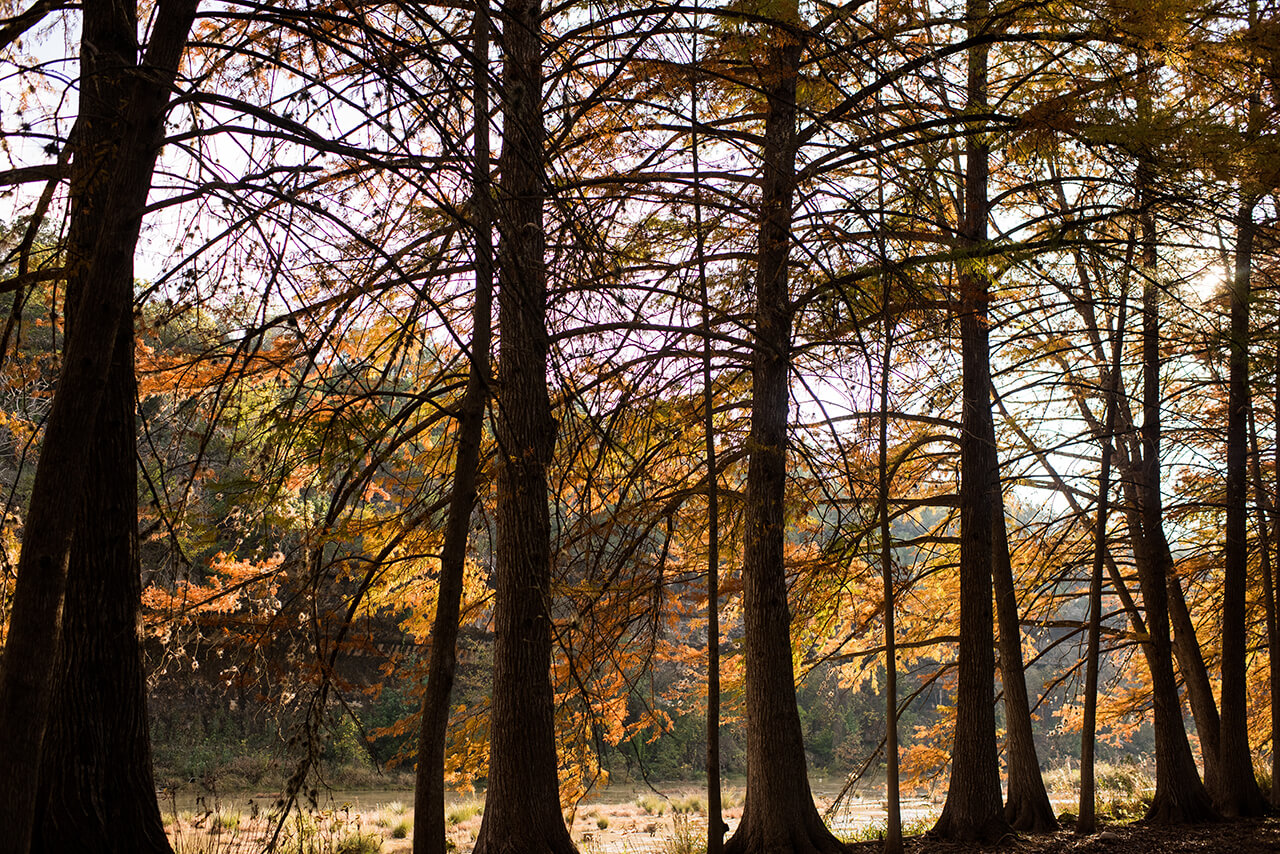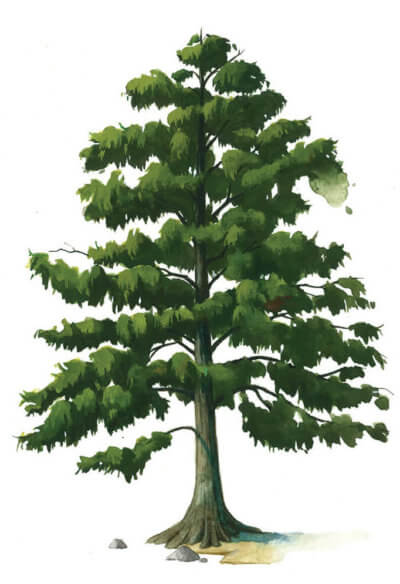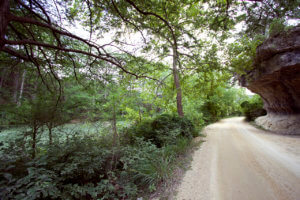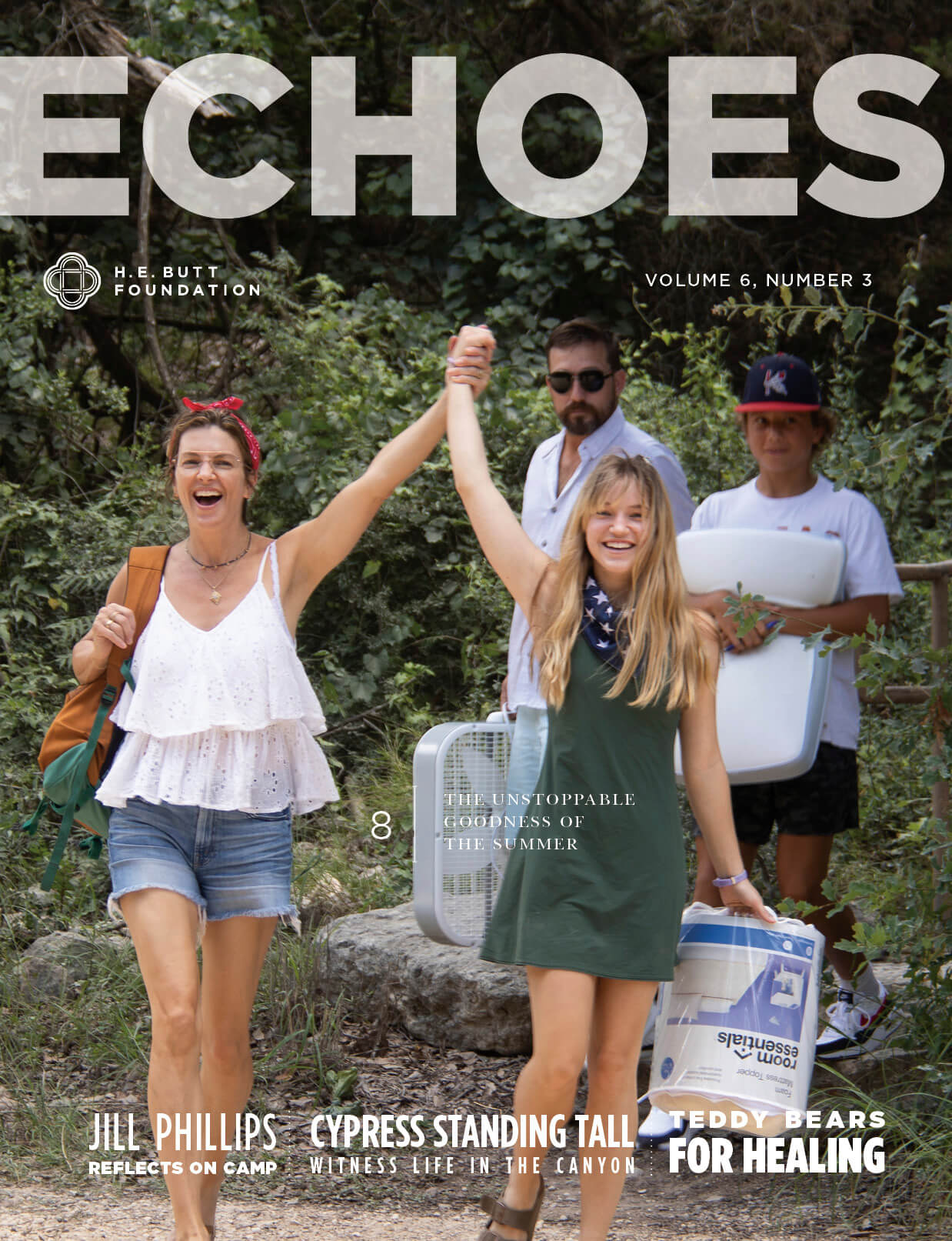

They are the “witness trees”—dozens of cypress trees standing tall along the banks of the Frio River. The term describes trees alive during significant historical events, such as the willow oak that stood over a War of 1812 battle in Maryland or at least a dozen trees on the fields at Gettysburg. They link our past with our present, silently watching human history take place beneath their outstretched branches. The cypress trees at the Echo Valley and Laity Lodge waterfronts have stood over youth campers playing in the river, counselors leading thought-provoking talks, and countless instances of people taking in God’s beauty showcased in the Canyon.
The year following the property’s purchase in 1954, Mary Holdsworth Butt carefully planned the planting of one-foot cypress trees by the water’s edge. “There were no cypress trees on [our] branch of the Frio when the property was bought,” according to a report Mrs. Butt wrote in 1974. George Haby, whose family has lived on an adjacent property since 1883, and Frank Leal helped plant those first trees.
“It’s neat to go down there and see how big they’ve got and think how little they were when we planted them,” Haby said.


Cypress trees are part of the redwood family and can grow as tall as 120 feet, according to Texas Parks and Wildlife. They naturally grow in the southeastern United States, their roots latching onto the nutrient-rich soil along waterways. Their westward reach extends into Central Texas.
Many live 600 years, while some can reach 1,200 years old. To help extend their longevity, Foundation staff members manage the trees’ health, looking holistically at their place in the ecosystem. Not only do they present an idyllic environment for us to enjoy and play, like youth campers do when they race down a zipline into the river, but their root systems aid in flood mitigation by anchoring the soil. Their canopies provide ideal homes for migratory birds, like yellow-throated warblers and northern parulas.
“They’ve grown into this beautiful view that you have from the Great Hall,” said Kevin Wessels, assistant director of property planning and stewardship. “How many Laity Lodge sessions have heard the whispers of from the river? How many guests have looked out across the river and just been in awe of these big cypress trees? Maybe they’re on the younger end of being ‘witness trees,’ but they’ve already witnessed things that have passed into history.”
Since the original trees were planted, they’ve reproduced and more have sprouted. Today, more than 350 cypress trees have taken root in the Canyon—from Echo Valley to Windsong to main entrances. The stretch from the Echo Valley waterfront to Pebble Beach is home to the most, with about 90 trees. A certified arborist annually inspects and prunes the trees to both ensure the safety for us under their boughs and to help these hearty trees keep thriving.
“Hopefully, there are many, many more years of relationships formed and cultivated wholeness that will occur under these trees, and they will continue to be long-term witnesses to the history of the H. E. Butt Foundation and what God is doing in the Canyon,” Wessels said.
B. T. Wilson’s Outdoor Ed program for sixth graders helped these students find the confidence to serve their communities.
